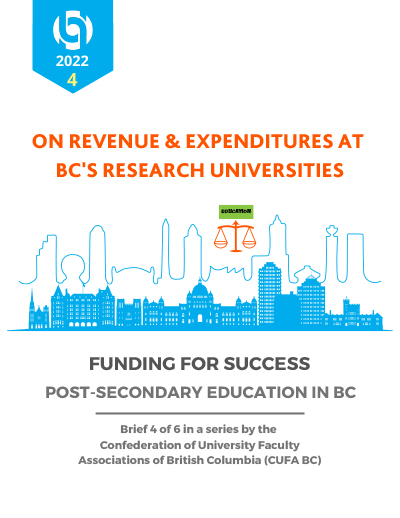When considering appropriate funding models for BC's universities, it’s important to look at how universities spend their funds and why.
Universities are under increasing pressure to perform as social and economic catalysts. Yet provincial funding has failed to keep pace with expanding mandates. Institutions have had to pare down operational expenditures in response to uncertain and changing government priorities. They’ve also had to seek private funding sources to compensate for underinvestment, especially from international student tuition.
Greater focus on administration and profitable private ventures, along with lesser focus on instruction and related research, reflects the marketization of post-secondary education. What’s more, funding structures seem to restrict universities’ decisions about how to allocate what they receive.
This paper examines trends in operating income, tuition, and expenditure at BC’s universities. We explore the impact on institutions’ ability to pursue their mandates and core academic missions. We also look at how faculty, staff, and students are affected.
This is the fourth brief in a six-part series, Funding for Success: Post-Secondary Education in BC.
“As university revenue has privatized, institutional spending and market mechanisms have forced a shift in the focus of institutions away from the public purposes of their academic missions to the pursuit of private resources and interests.”
- Excerpt

